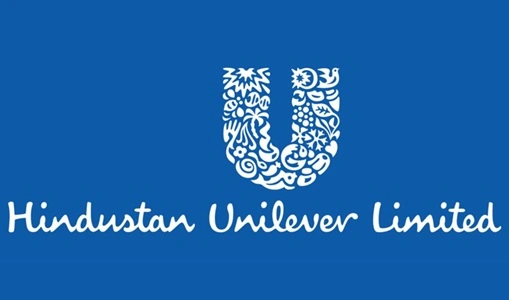Hindustan Unilever Limited (HUL) is one of India’s largest and most successful fast-moving consumer goods (FMCG) companies. Established in 1933, HUL operates as a subsidiary of Unilever, a global consumer goods giant. HUL has an extensive portfolio of brands across multiple categories, including personal care, home care, food, and beverages. With its products reaching millions of households across the country, HUL plays a vital role in shaping consumer trends in India.
In this article, we explore HUL’s business model, revenue streams, and the strategies that drive its success in the competitive FMCG sector.
Overview of HUL’s Business Model

HUL operates on a B2C (Business-to-Consumer) model, selling its products directly to consumers through a vast distribution network and retail channels. Its business model revolves around creating value for consumers by offering high-quality, affordable products that cater to diverse needs and preferences.
Key Features of HUL’s Business Model:
- Diverse Product Portfolio:
- HUL’s product offerings span categories such as:
- Personal Care: Soaps, shampoos, deodorants, skincare.
- Home Care: Detergents, dishwashers, surface cleaners.
- Foods & Refreshments: Tea, coffee, health foods, ice creams.
- HUL’s product offerings span categories such as:
- Market Penetration:
- HUL leverages its extensive distribution network to reach urban, rural, and semi-urban markets, making its products available across India.
- Brand Strategy:
- The company’s portfolio includes iconic brands like Lux, Dove, Surf Excel, Lifebuoy, Knorr, and Bru, ensuring consumer trust and loyalty.
- Innovation and R&D:
- HUL invests significantly in product innovation and sustainability to meet evolving consumer preferences and regulatory requirements.
How Does HUL Earn Money?
HUL generates revenue through the sale of consumer goods across its diverse product categories. Here’s a detailed breakdown of its revenue streams:
a. Sale of Products
- Personal Care:
- Products such as soaps (Lifebuoy, Lux), shampoos (Sunsilk, Dove), and skincare items (Fair & Lovely, Vaseline) form a significant portion of HUL’s revenue.
- Personal care contributes to high margins due to the premium nature of many products.
- Home Care:
- HUL’s home care products include detergents (Surf Excel, Rin, Wheel), dishwashing bars (Vim), and floor cleaners (Domex).
- These products are high in demand across both urban and rural markets, driving consistent sales.
- Foods & Refreshments:
- HUL earns revenue through its food and beverage brands such as Brooke Bond, Bru, Knorr, and Kwality Wall’s.
- Tea and coffee are staple products, while ice creams and health foods cater to changing consumer preferences for indulgence and wellness.
b. Premiumization Strategy
- HUL strategically positions certain brands as premium offerings, targeting higher-income consumers. For example:
- Dove, TRESemmé, and Pears in personal care.
- Surf Excel in home care.
- Premium products contribute significantly to revenue by offering higher margins than mass-market products.
c. Rural and Urban Market Segmentation
- HUL employs a dual pricing strategy:
- Urban Markets: Premium and branded products are marketed to urban consumers.
- Rural Markets: Affordable and smaller-sized packs target rural households, where price sensitivity is higher.
d. E-Commerce Revenue
- HUL has expanded its presence on online platforms like Amazon, Flipkart, and BigBasket.
- Its D2C (Direct-to-Consumer) channel, such as UShop, also contributes to revenue, particularly post-pandemic, as online shopping gains traction.
e. Institutional Sales
- HUL collaborates with hotels, restaurants, and catering businesses to supply products in bulk, generating additional revenue.
f. Licensing and Exports
- HUL exports products to international markets, leveraging its parent company Unilever’s global network.
- It also earns through licensing its brands to Unilever in select markets.
g. Sustainable Products
- HUL has been launching eco-friendly products, such as biodegradable detergents and packaging innovations. These sustainable initiatives align with consumer demand and regulatory trends, opening new revenue opportunities.
Why HUL’s Model Works
HUL’s success lies in its ability to address consumer needs across income groups, geographies, and product categories. Here’s why its model works:
a. Extensive Distribution Network
- HUL’s products are available in over 8 million outlets across India, ensuring deep market penetration.
b. Diverse Portfolio
- With offerings spanning daily essentials to premium products, HUL caters to consumers across income groups, reducing dependency on any single category.
c. Strong Brand Equity
- HUL’s well-established brands have high recall and trust among Indian consumers, driving repeat purchases.
d. Focus on Innovation
- Regular product launches and upgrades, aligned with changing consumer preferences, keep HUL competitive in the dynamic FMCG market.
e. Localization
- HUL tailors its products and marketing strategies to meet the cultural and regional preferences of Indian consumers.
f. Sustainable Practices
- By focusing on sustainability, HUL not only addresses consumer demand for eco-friendly products but also aligns with government regulations and global trends.
Financial Performance
HUL’s robust business model is reflected in its strong financial performance:
Revenue Growth
- HUL reported revenues exceeding ₹55,000 crores in FY 2023, driven by growth in core categories and premium products.
Profitability
- The company maintains healthy profit margins due to its operational efficiency, premiumization strategy, and economies of scale.
Market Leadership
- HUL commands a dominant share in most FMCG categories, maintaining its position as a market leader in India.
Challenges and Opportunities
Challenges
- Intense Competition:
- HUL faces competition from domestic players like Patanjali and ITC, as well as global brands.
- Raw Material Costs:
- Fluctuations in commodity prices, such as palm oil, impact margins.
- Rural Penetration:
- While HUL has a strong rural presence, increasing competition and price sensitivity in these markets pose challenges.
Opportunities
- Digital Growth:
- Expanding its e-commerce presence and digital marketing can tap into tech-savvy consumers.
- Health and Wellness Trends:
- Launching health-oriented and natural products to meet consumer demand for wellness.
- Sustainability:
- Innovating in sustainable packaging and eco-friendly products to strengthen its brand image.
- Geographic Expansion:
- Growing its export business by leveraging Unilever’s global reach.
Future Prospects
HUL’s growth prospects are promising due to its focus on innovation, sustainability, and digital transformation. Key focus areas include:
- Expanding its premium product portfolio.
- Increasing its rural footprint by launching affordable packs.
- Investing in technology to enhance supply chain efficiency and customer engagement.
- Strengthening its position in emerging categories like plant-based foods and sustainable products.
Conclusion
HUL’s business model exemplifies how a combination of innovation, efficiency, and consumer-centric strategies can drive success in the competitive FMCG sector. By leveraging its extensive distribution network, strong brand portfolio, and focus on premiumization, HUL continues to grow its market share and maintain its leadership position. With a strong emphasis on sustainability and digital transformation, HUL is well-positioned to meet the evolving demands of Indian consumers and sustain its long-term growth in the dynamic FMCG landscape.

